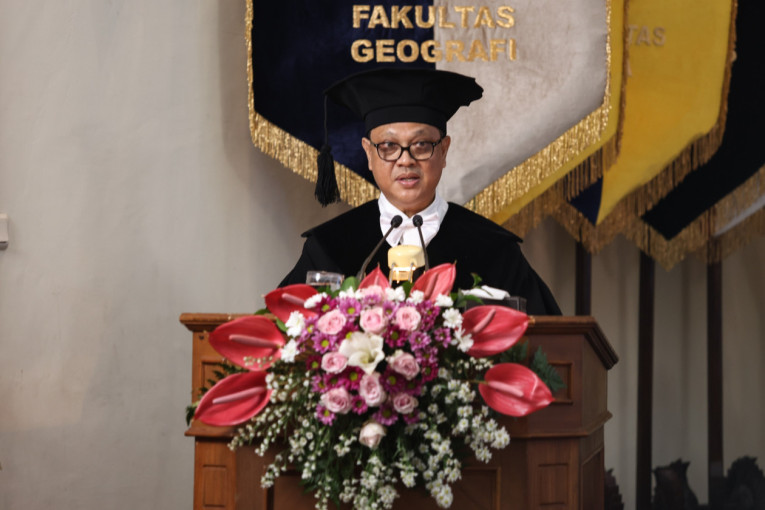
Professor Projo Danoedoro, a distinguished lecturer at the UGM Faculty of Geography, has been appointed a full professor in remote sensing for landscape ecology.
With four decades dedicated to remote sensing, he delivered an inaugural lecture titled “Remote Sensing: Position, Paradigm, and Modeling for Landscape Ecology” during his confirmation ceremony.
The choice of landscape ecology from the remote sensing perspective as the speech’s theme was underlined for two significant reasons. Firstly, landscape ecology studies are intricately linked with geography, focusing primarily on the interaction between organisms, particularly humans, and their environment.
“Hadisumarmo and Bintarto stated (1979) that geography is a science that is oriented toward problems within the framework of human interaction with their environment. Secondly, remote sensing and geographic information systems (GIS) currently serve as the primary analytical tools in spatial landscape studies across various scales,” remarked Professor Danoedoro at the UGM Senate Hall on Tuesday (Feb. 13).
He highlighted that in today’s modern era, numerous landscape-related activities necessitate remote sensing due to their extensive scope, requiring maps of various environmental phenomena in a relatively short time.
Technological advancements have evolved remote sensing with diverse acquisition platforms, sensor characteristics, long-wave spectral regions, and analysis methodologies.
Acquisition platforms have progressed from balloons to aircraft, then satellites, with the present inclusion of various types and sizes of unmanned aerial vehicles (UAVs) or drones equipped with an array of sensors.
Furthermore, satellite technology has transitioned from single multisensory satellites to satellite constellations. Image analysis has also advanced from visual interpretation to utilizing mainframe computers, mini-computers, desktops, networks, and cloud computing.
“Data analysis no longer relies solely on single images but encompasses multisensory images and even integrates with other spatial data in significant big data sizes,” he added.
Professor Danoedoro acknowledged that remote sensing commonly employs dichotomous approaches in landscape studies. At least four dichotomous approach models in remote sensing are still prevalent.
These four dichotomies include the key photo approach versus the landscape ecology approach, the holistic approach versus the reductionist approach, the per-pixel approach versus the object-based approach, and the algorithmic approach versus the heuristic approach.
In landscape ecology studies, the key photo approach is less dependable because the analysis and interpretation processes overlook the context of the location or site and its association with other objects.
“As its name implies, the landscape ecology approach is more suited to this context,” said the professor.
He further explained that the purely holistic approach utilizes remote sensing and relies on visual interpretation, where land units are initially defined. Then, the characteristics or attributes of the landscape are inferred from each pre-defined unit.
Conversely, the reductionist approach dissects complex landscape information into thematic maps, which are then analyzed through overlays, resulting in land units emerging as a logical consequence of the overlay process.
“In essence, the holistic approach leans more towards remote sensing, while the reductionist approach is colored more by GIS,” he expounded.
Professor Danoedoro also noted that the per-pixel approach remains reliable in biophysical landscape modeling, albeit as multispectral classification, spectral transformation, or machine learning-based classification.
Meanwhile, the algorithmic approach in image processing software (and GIS) nowadays is being supplanted by the heuristic approach, which adopts a problem-solving and complex strategy-oriented approach in landscape ecology studies.
Author: Agung Nugroho
Photographer: Donnie

